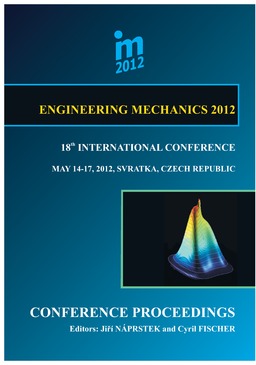Proceedings Vol. 18 (2012)

ENGINEERING MECHANICS 2012
May 14 – 17, 2012, Svratka, Czech Republic
Copyright © 2012 Institute of Theoretical and Applied Mechanics, Academy of Sciences of the Czech Republic, v.v.i., Prague
ISBN 978-80-86246-40-6 (electronic)
ISSN 1805-8248 (printed)
ISSN 1805-8256 (electronic)
list of papers scientific commitee
pages 1001 - 1010, full text
Explicit integration plays a key role in many problems of linear and non-linear dynamics. For example, the finite element method applied to spatial discretization of continua leaves a system of ordinary differential equations to be solved, which is often done by the central difference method. This and similar explicit schemes suffer from magnification of the round-off errors if the time step exceeds certain fixed length known as the critical time step. The corresponding critical Courant number (Cr, dimensionless time step) is inversely proportional to the maximum natural frequency of the system. The well known recommendation Cr = 1 is deemed as the best. In fact, for some configurations this choice may dangerously overestimate the true value. It was shown in an earlier paper by the same authors that by increasing the number of elements in the finite element mesh one will paradoxically improve the mesh’s stability towards its theoretical limit. The present paper refines some details, presenting small scale numerical tests. The first test involves a long truss/bar consisting of one row of elements whose critical Courant number changes as elements are added one after another. Since this increases the critical number one may pick up a time step such that it is supercritical to a certain mesh but becomes subcritical by merely adding one element. In a similar fashion, a square area is tested in the second example, using different arrangements of edge supports. It is concluded that the usual setting, Cr = 1, is not entirely safe.
back to list of papers
Text and facts may be copied and used freely, but credit should be given to these Proceedings.
All papers were reviewed by members of the scientific committee.

 Powered by
Imce 3.20 © 2023, Pavel Formánek, Institute of Thermomechanics AS CR, v.v.i. [generated: 0.0116s]
Powered by
Imce 3.20 © 2023, Pavel Formánek, Institute of Thermomechanics AS CR, v.v.i. [generated: 0.0116s]